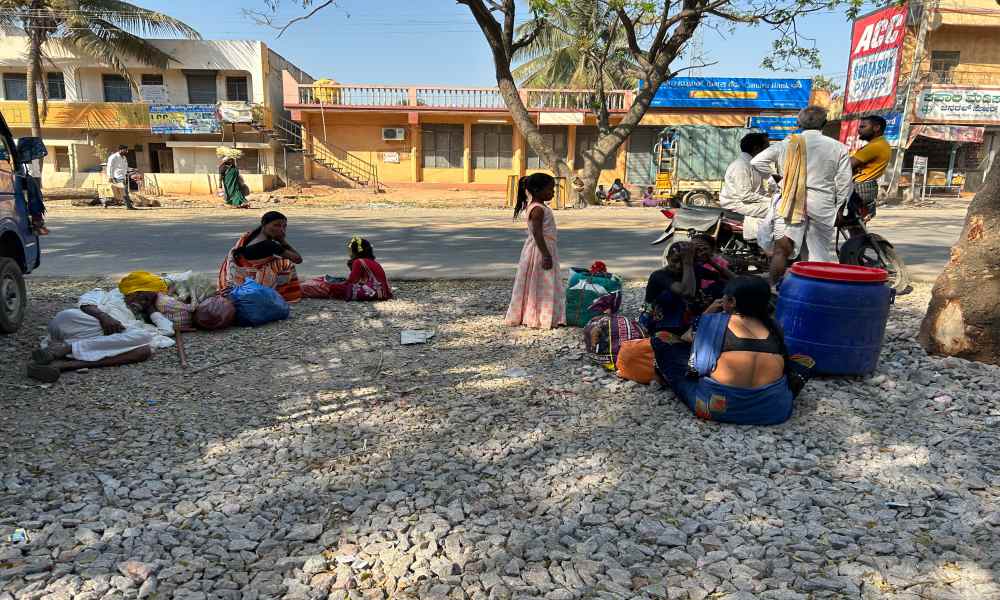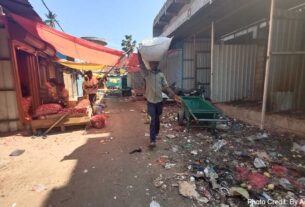Report shows that India will not be able to meet the 2030 deadline set for 19 of the 33 SDG indicators.
India’s Sustainable Development Goals (SDG) scenario: 707 districts.17 SDG’s. 33 indicators. 19 Off-target. 13 On-target.
Many districts in India are expected to never meet the set SDG targets. A study by Lancet, a health-related research site shows that India is not on-target for 19 of the 33 SDGs indicators. However, the country is on target to meet 13 of the 33 indicators.
At the all-India level, among the 707 districts, the one SDG indicator that has already been achieved is Adolescent Pregnancy (10–14).
Eight critical indicators which are not on target have been identified as –access to basic services, anaemia, child marriage, partner violence, tobacco use, wasting and overweight children, and modern contraceptive use— more than 75 percent of the 707 Indian districts were off-target for these indicators.
A Medical Inspector from the Family Planning Association of India said, “Most people are not aware of most modern contraceptive methods, condoms and sterilization process are the most commonly known ones.” She added that youngsters use condoms and the older generation prefers female sterilization even though male sterilization is easier and less risky for the patient.
The mid-line assessment of districts study also suggest, “An urgent need to increase the pace and momentum on four SDG goals: No Poverty (SDG 1), Zero Hunger (SDG 2), Good Health and Well-Being (SDG 3) and Gender Equality (SDG 5).”
India is on target to meet indicators like – Full vaccination (card), birth registration, skilled birth attendants, electricity access, internet use, Have Bank Account (Women), Improved Sanitation, Multidimensional Poverty, Tobacco Use (Women), Child Marriage Girl (<15), Under 5 Mortality, Teenage Sexual Violence and Neonatal Mortality.
M.G Paly, General Manager at the Karnataka Women and Child Development Department said that every time a child marriage case is reported, they file an First Information Report (FIR) and try to catch them even before it is reported. She added that they have stopped many such cases while the wedding was happening and the parties involved faced serious consequences. “We are doing everything we can to reduce child marriages, gender equality, partner violence cases and giving them shelter; we think we can reach the target for the SDG goals.”
Indians who have been vaccinated for COVID-19 is 220, 64,01,760 and the Ministry of Family and Health Welfare monitors the numbers of other vaccinations as well.
The report estimates India will meet its targets on Improved Water in 2031, hand washing facilities in 2033, clean fuel for cooking in 2035, teenage pregnancy (15 to19) in 2039, and sexual partner violence in 2040.
Anaemia among women, especially pregnant women is on the rise. The electricity access indicator’s target was met in 2020 but it is now seeing a declining trend, we are going backwards with this indicator.
Dr Jitendra Singh, Union Minister of State Science & Technology in a valedictory address in Delhi said, India follows a holistic approach towards its 2030 SDGs by launching various schemes. He said that the third edition of SDG India Index 2020–21 launched by NITI Aayog last year is more robust than the previous editions on account of wider coverage of targets and indicators.
Even the SDG National Indicator Framework, 2022 estimates India will reach some indicators in 5-10 years from now.
Dr R.V Chandrashekhar, a sociology professor at National Law School of India said, “Our belief system is anti-development. The role of the SDGs and the millennial goals are great but the reality is very different. In the Indian social setting our religious belief is everything.” He added that women are the second citizen in most religions and that Indians do not really implement the constitution but take religion as their way of life.
“There is a gender inequality at work place, in educating your male and female child also. In the last twenty years we are going backwards as the caste, gender, and culture issues are just increasing.” He added that our belief system does not align with the SDG’s and that they are hampering the development of the nation. “The herd mentality and the general mindset is what has set us back in reaching the targets; we need to fix this to start achieving the SDG,” Dr Chandrashekhar said.
The National Health Portal shows the methods implemented to achieve the target; to strengthen the implementation of the World Health Organization (WHO) Framework Convention on Tobacco Control in all countries, as appropriate.
“To support the research and development of vaccines and medicines for communicable and non-communicable diseases access to affordable essential medicines and vaccines should be provided, in accordance with the Doha Declaration on the TRIPS Agreement and Public Health.”
It also suggests to substantially increasing health funding and financing, and the recruitment, development, training and retention of the health workforce in developing countries.
The study published in the Lancet by S.V Subramanian, a Harvard professor, gives a mid-line assessment of the progress made by 707 out of the 763 districts in India in achieving the SDG targets.
A majority of Indian districts measured in the report are off-target for the SDGs related to no poverty, zero hunger, good health and well-being, and gender equality. “In the current policy landscape, there are existing programs and frameworks in place that can be linked to the indicators that are part of these goals.”
The report cites examples of programs such as Pradhan Mantri Awaas Yojana (to deliver affordable pucca housing to the poor). India is on target to achieve universal sanitation to its citizens by 2030, and a majority of its off-target districts will achieve their targets by 2035.
Similarly, the study mentions that with 60 percent of healthcare in India being borne out of pocket. “Addressing the lagging indicator of health insurance coverage (related to SDG good health and well-being) through an appraisal of the Pradhan Mantri Jan Dhan Yojana would be necessary.”
The study also urges the policy makers to formulate new policies related to reducing tobacco consumption which is a key concern in many districts.
ActionAid is a global federation working for a world free from poverty and injustice. It has a ‘Beti Zindabad’ Campaign to protect the rights of women. It also focuses on providing them with quality education and many such initiatives to help India reach some of the SDG targets. Cathy Sophia in a review said, “I wanted to express my gratitude for Actionaid Association for their dedicated work among the underprivileged. They have transformed millions of lives with timely support and empowered them to voice for their rights that is evident with their reports and services. I am delighted to be a part of their journey.”
Corrine Kumar, founder of Vimochana. an NGO that works with women and child upliftment, said, “The sustainable goals are so unsustainable, with the kind of development model we have. It has made the poor people poorer and the rich richer.” She added that they work in slum areas, with migrants, and with troubled women to help them achieve equality. She said such initiatives contribute towards the country achieving its SDG goals. Mrs. Kumar said, “I have worked closely with women and what we need to do to reach a lot of these goals is involving women much more at the planning level and at every level in the development model.”




